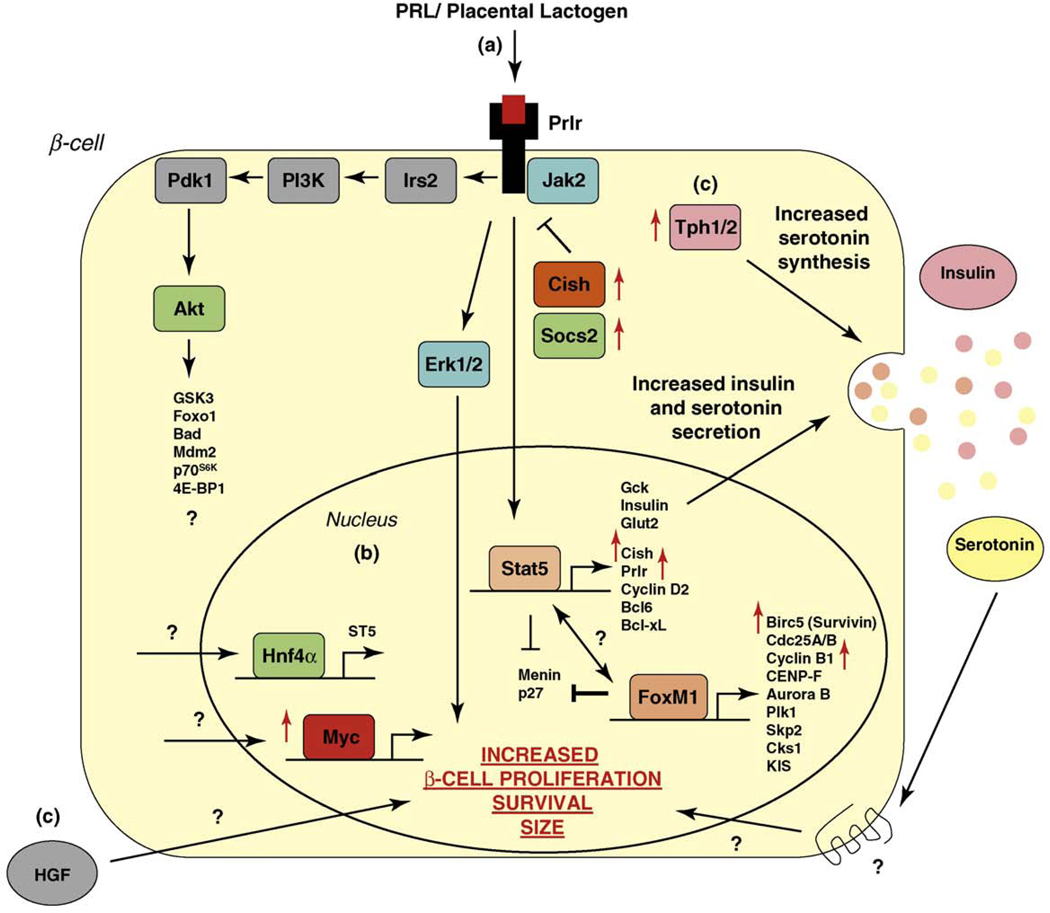Figure 3.
Known mechanisms responsible for β-cell gain during pregnancy. (a) Activation of PRL receptors upon binding of lactogens (PRL or placental lactogen) plays a pivotal role in the adaptation of the β-cell to pregnancy. Downstream signaling pathways of the PRL receptor include STAT5, phosphatidylinositol 3-kinase (PI3K) and MAPK pathways, targets of which have been implicated to lead to increased β-cell proliferation, survival and size. (b) Known transcription factors (listed with their target genes) that regulate the increase in β-cell mass during pregnancy. Red arrow indicates an increase in expression of genes in the islet during pregnancy day 14.5 [10]. (c) Possible PRL receptor independent mechanisms leading to β-cell gain mechanisms. For example, increased HGF levels in the islet endothelium correlates with increased β-cell proliferation in pregnant rats [83]. However, much is still to be discovered, as evidenced by the recent finding that upregulation of the developmental transcription factor MafB in β-cells occurs during pregnancy [84].

